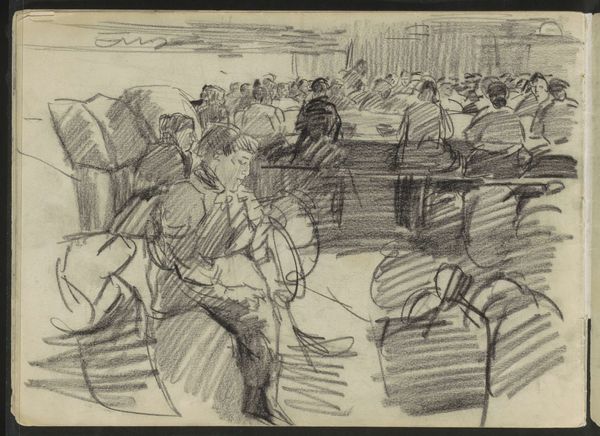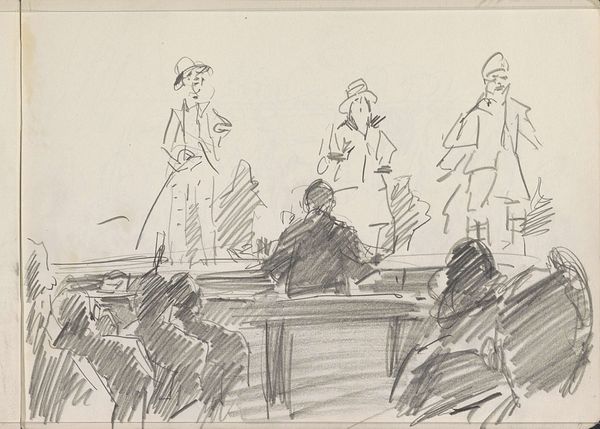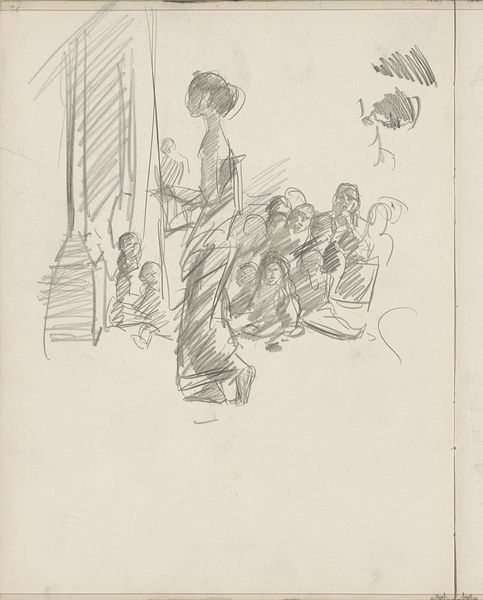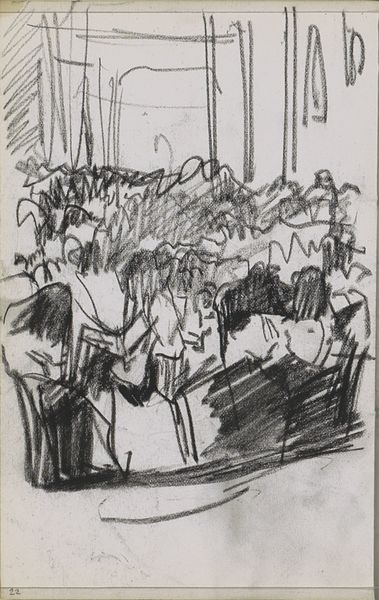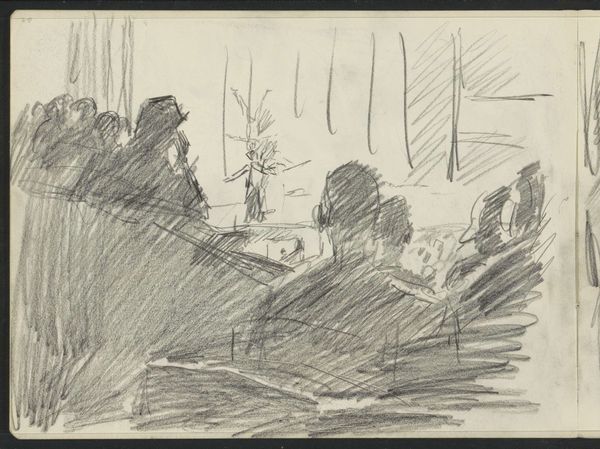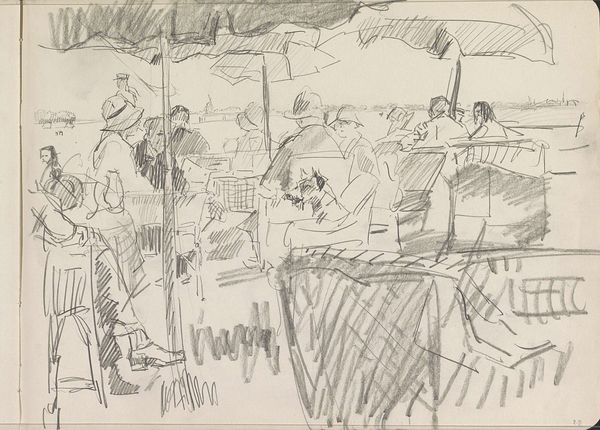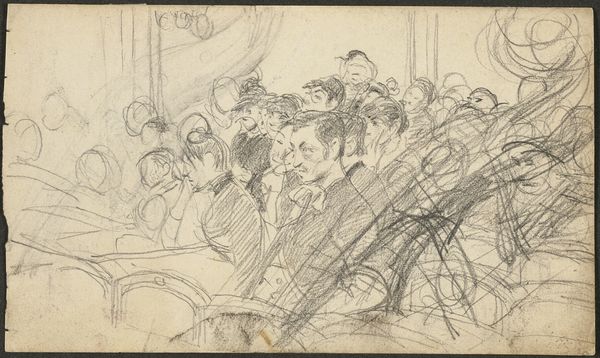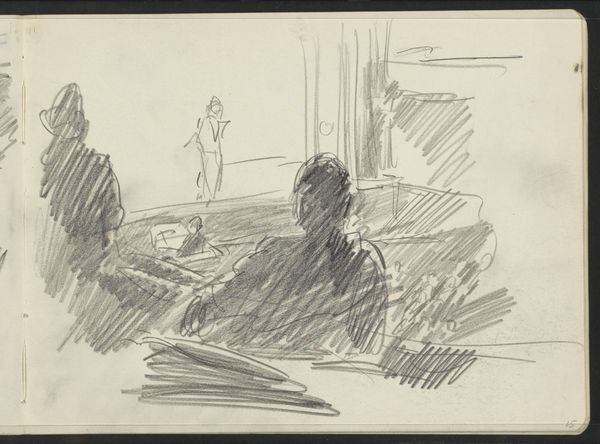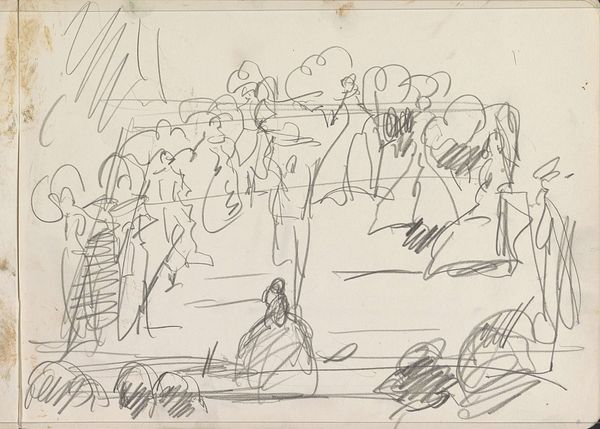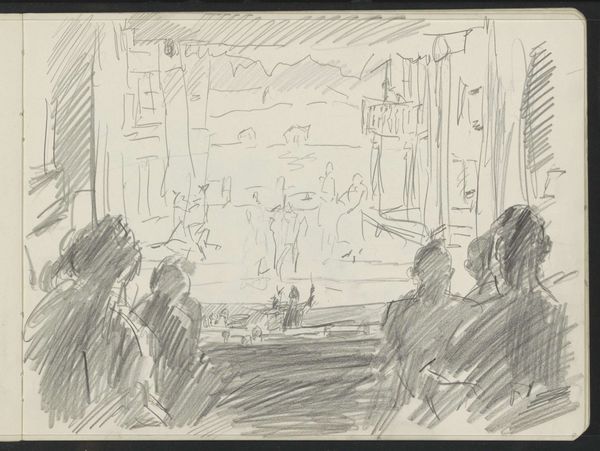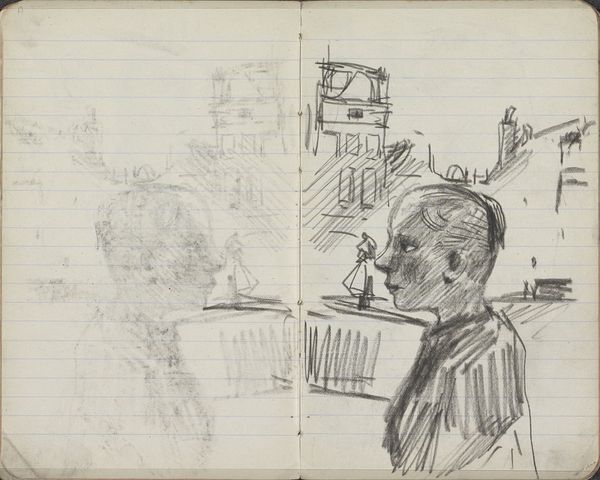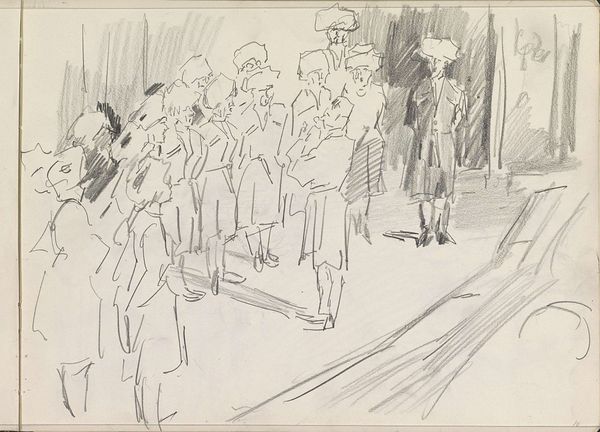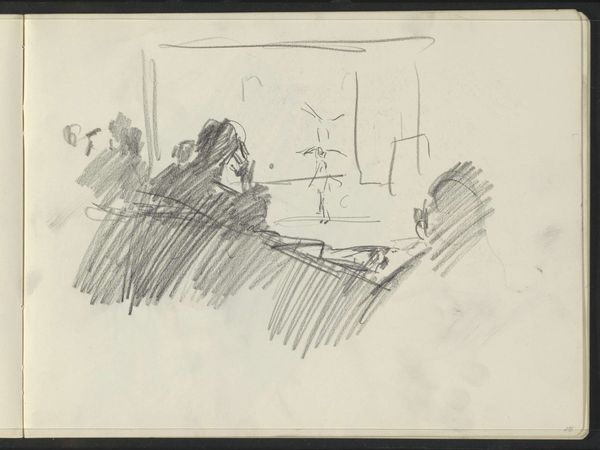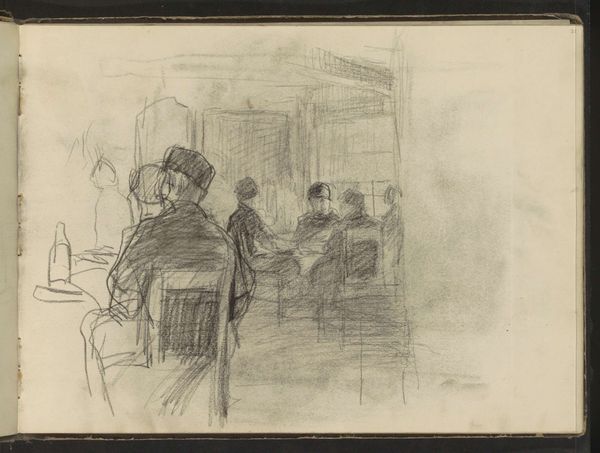
Copyright: Rijks Museum: Open Domain
Editor: Here we have "Fietsende acrobaat op het toneel", or "Cycling acrobat on stage," by Isaac Israels, dating from 1875-1934. It's a pencil drawing currently held at the Rijksmuseum. The sketchiness really captures a sense of fleeting movement. What stands out to you about this piece? Curator: I’m struck by the interplay between line and form. The artist masterfully employs the pencil to define space and suggest movement, using strokes with varying degrees of darkness to create an illusion of depth. Editor: Could you elaborate on how that affects the composition? Curator: Note how the perspective draws our eyes from the figures in the foreground, seemingly audience members, towards the ambiguous cyclist on stage. It is, in essence, a play of geometric arrangements where light and shadow contribute equally to the structural integrity. Look closely at the varied orientation of lines depicting the viewers; can you discern any particular groupings? Editor: It seems a little haphazard, not really a formal structure in their seating. It conveys a natural disarray. Curator: Indeed. And the seeming incompleteness, the unrefined state of the lines, does it subtract, or does it augment your aesthetic experience of it? Editor: I think it adds to it, capturing an ephemeral moment. This incomplete character makes the viewer reconstruct their own ideas of that moment and thus more intimate. I initially focused on the cycling acrobat, but now I am more intrigued by the lines delineating the audience and the interplay they have as elements within the composition. Curator: Precisely! Now, reflecting upon it all, would you agree the beauty in this work resides not solely in its representational content but also in its formal elements and their interaction?
Comments
No comments
Be the first to comment and join the conversation on the ultimate creative platform.
